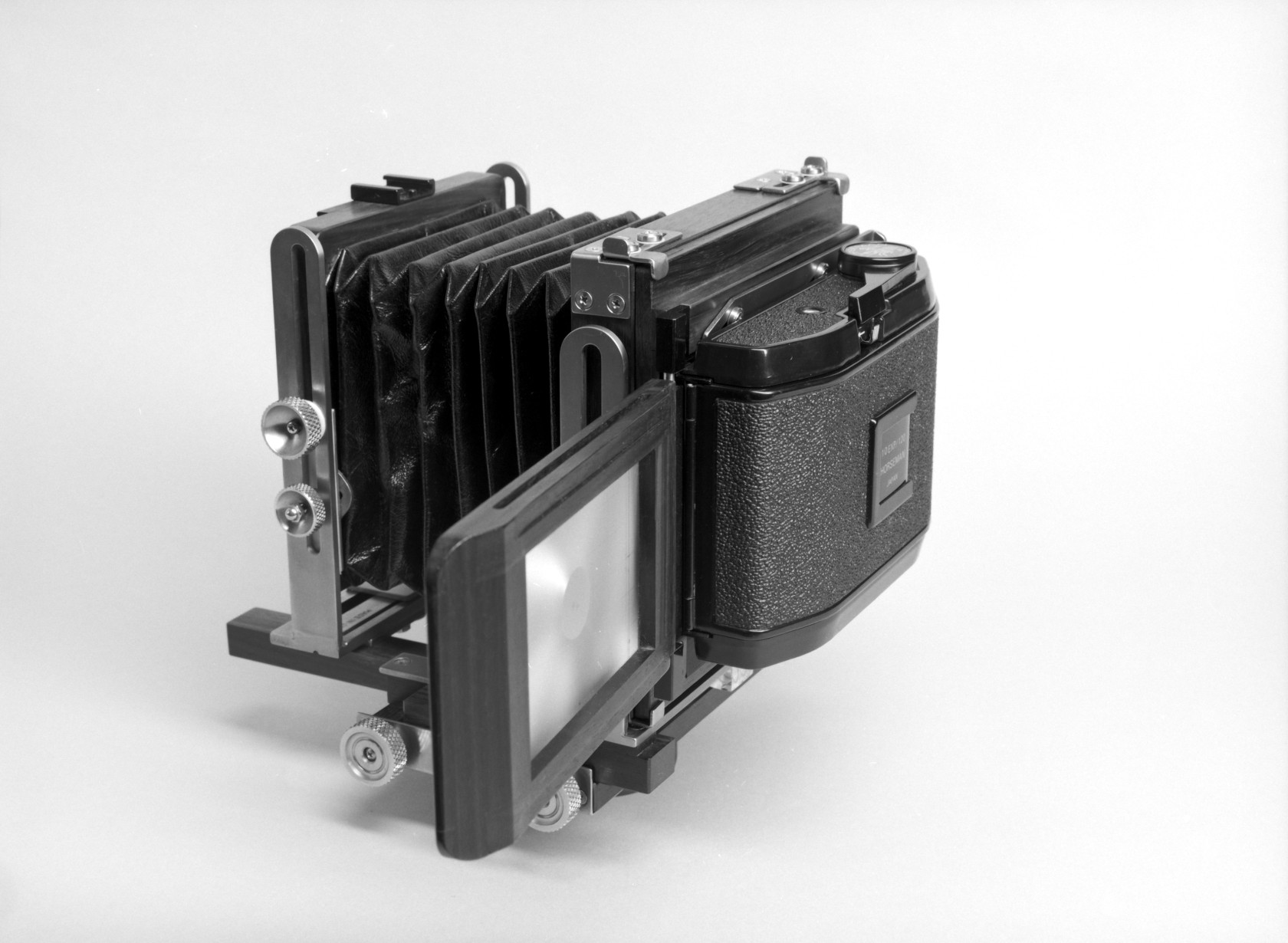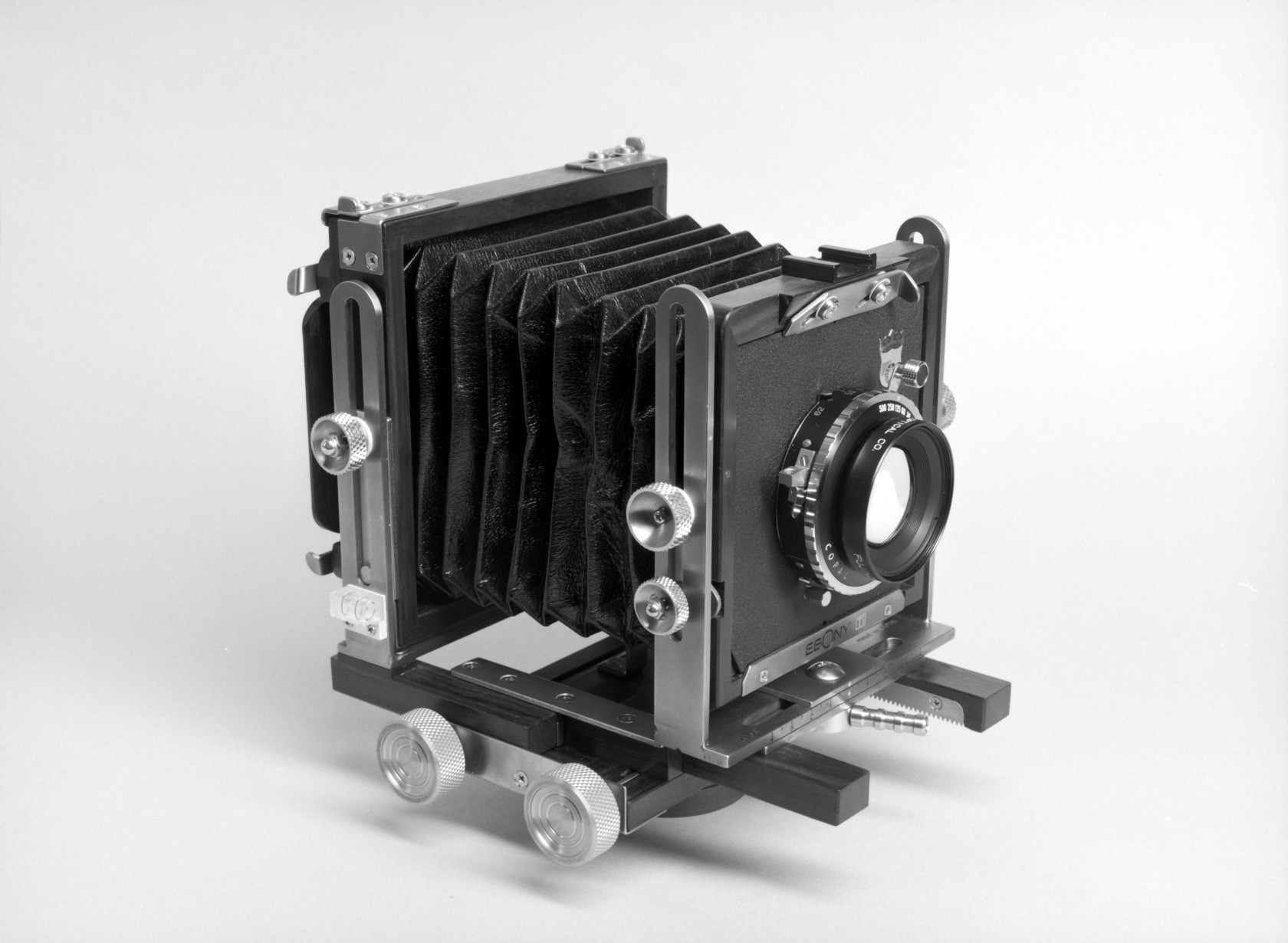Ebony SW23
While looking for a larger format I was intrigued the 6x9 format for several reasons. It's wider than the 6x7 aspect ratio, and it's a roll-film format so I can quickly set up for the next shot when shooting small creatures. 6x9 is approximately double the area of a 645.
See also: Fujion Lenses.
Specifications
| Model | Type | Weight | Min Bellows | Max Bellows | Max Focal Length |
|---|---|---|---|---|---|
| 23S | non-folding | 1.8kg | 67mm | 275mm | 308mm |
| SV23 | folding | 2.0kg | 75mm | 420mm | 453mm |
| SW23 | non-folding | 1.3kg | 46mm | 157mm | 190mm |
The focal length for the SW23 is my measurement, I inferred the max focal length for the other models. Weight and Max Bellows is based on the 2002 Ebony Catelog. The 23S and SV23 feature a full range of rear movments.
The Shen-Hao TFC69-A appears to be modeled after the Ebony 23S.
Features
After shooting a few rolls of film, here is what I like
- Titanium components look amaizing and don't tarnish
- Very fast to configure
- Detents on front stand rotation and tilt
- Lens board and back can be rotated or swapped with very little effort
The only feature missing is a extension scale on the base.
Film Backs
Like many "2x3" cameras, the Ebony line follows the Graflex standard.
The Horseman 8EXP/120 is a superb film back except for the fact that it is easy to confuse with the 10EXP/120 back which takes 6x7, not 6x9.
The Mamiya RB67 6x8 can be operated with or without batteries, and includes a slot to put the film label in.
On both backs the film is advanced by pulling a small lever to the side.
| Make | Weight (grams) | Visible Area (mm) | Frames |
|---|---|---|---|
| Horseman 120 8EXP | 425 (15 oz) | 56×68 | 8 |
| Mamiya RB67 Pro SD 6x8 Power Back | 596 (21 oz) | 56×74 | 9 |
| Horseman 120 10EXP | 425 (15 oz) | 56×82 | 10 |
| Mamiya RB67 6x4.5 | 436 (15 oz) | 56×41 | 16 |
TTL Metering
One of the strange accessories available for 6x9 is a Horseman light meter back. I'm not sure why I would use this instead of hand-held measurements, but it's cool nonetheless. This back takes an obsolete 5.4V battery, but a more common 4LR44 6V battery will work as well.
Focus Scale
At full extension a 100mm lens provides a magnification of approximately 1:1.
Exposure values were calucated using
log_2((extension / focallength)^2)
The first prt of the equasion determines the
filter factor,
and the
log2
function converts this to an f-stop. Example in Ruby
Math.log2((118.0/105) ** 2) # 0.337 or 1/3
On Display

